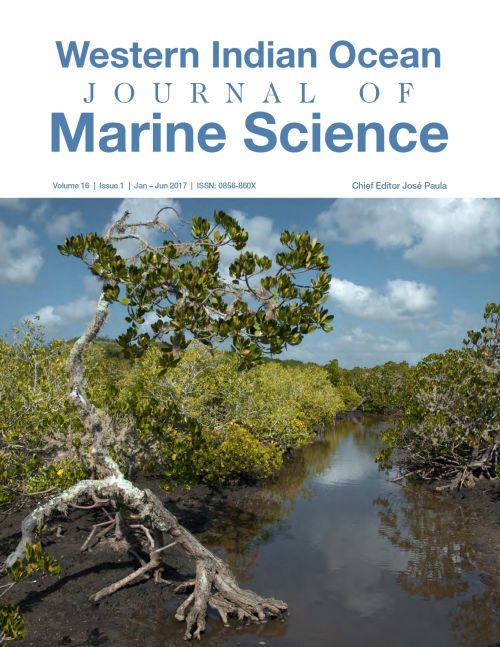Main Article Content
Evaluating the fisheries potential of solar salt works reservoirs at Ungwana Bay, North Coast, Kenya
Abstract
Artisanal fisheries are important livelihoods for coastal communities in many developing countries, where uncontrolled fishing can easily lead to depleted stocks in nearshore waters. Man-made reservoirs associated with solar salt works along the coast of Ungwana Bay provide alternative fishing grounds for local fishers unable to venture far offshore. We evaluated the fisheries potential of salt works reservoirs through regular catch assessment surveys at Gongoni, Kurawa and Marereni reservoirs between January 2015 and February 2016. Fishing effort and catch data were analyzed for seasonal patterns in catch composition and catch rates. Prawn seine nets were the dominant fishing gear used in the three reservoirs, augmented by traps at Kurawa. A total weight of 4.02 tonnes consisting of 49 finfish and 9 crustacean species was sampled. Metapeneaus monoceros was the most abundant species at Gongoni and Marereni, and Oreochromis mossambicus dominated at Kurawa. Non-metric multidimensional scaling (nMDS) showed distinct catch composition in all reservoir / season combinations for prawn seines. Highest species diversity occurred at Marereni during northeast monsoon conditions, whereas lowest diversity occurred at Gongoni during the southeast monsoon. Catch composition of prawn seines and traps differed at Kurawa. There was a significant difference in catch rates (kg/fisher.hr-1) between reservoirs, but not between seasons. Fisheries production in reservoirs was therefore affected more by their location and the gear type used, rather than by season.






